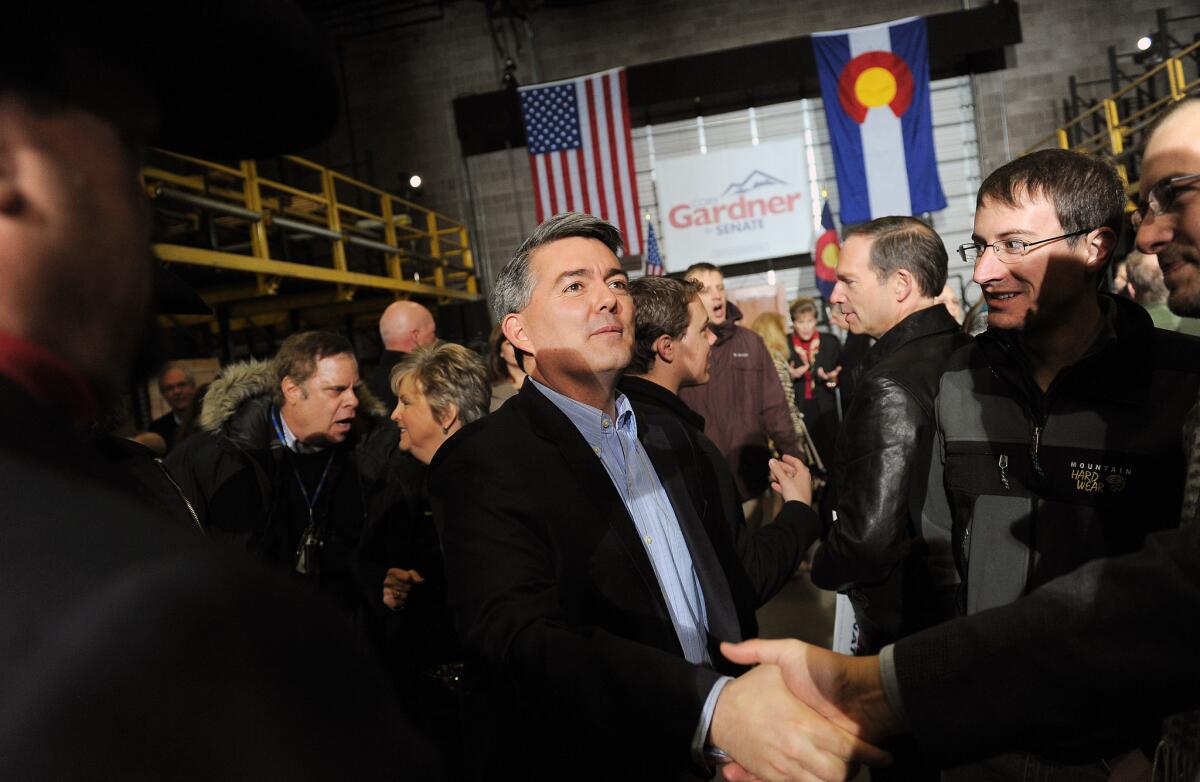Are the Democrats doomed?

This year was always going to be a difficult one for Democrats, as they battle to keep their five-seat majority in the Senate. But in recent months, the political landscape has grown bleaker.
Let’s start with the basics: Democrats have more seats at risk this year than Republicans do. Of the 36 Senate seats up for election (including three midterm vacancies), 21 are held by Democrats. And seven of those Democratic seats are in Republican-leaning “red states” that Mitt Romney won in 2012: Alaska, Arkansas, Louisiana, Montana, North Carolina, South Dakota and West Virginia.
The stakes are enormous. If Republicans take control of the Senate and keep the House of Representatives, they’ll be able to pass parts of their conservative agenda that have been blocked until now. President Obama will still have veto power, but he’ll have to spend his last two years in office stuck on defense.
PHOTOS: 5 Senate women to watch in 2014
Since the presidential election of 2012, the country’s mood has remained sour. The sluggish economic recovery has convinced most Americans that we’re still stuck in a recession, no matter what the economists say. Obama’s job approval has slumped to record lows, thanks largely to the disastrous launch of his healthcare plan. That makes 2014 a bad year to be an incumbent — especially a Democratic incumbent.
Compounding Democrats’ worries, Republicans are having a good year recruiting top-tier Senate candidates in both blue and red states. In Colorado, GOP Rep. Cory Gardner has turned Democratic Sen. Mark Udall’s once-expected reelection into a race to watch. In New Hampshire, former Sen. Scott Brown (R-Mass.) moved north last week and announced his desire to become Sen. Scott Brown (R-N.H.).
Charlie Cook, dean of Washington’s congressional election forecasters, pronounced the Democrats’ challenges “grisly.”
And the mood wasn’t improved by the victory last week of Republican David Jolly, who beat Democrat Alex Sink in a special election in Florida’s Gulf Coast region for a vacant seat in the House of Representatives.
In Florida, Democrats thought they had a strong chance; Obama had carried the district narrowly in 2012, and Sink was a practiced campaigner. The Democratic campaign even outspent the GOP. But the untested Republican candidate won by almost 2%.
What happened? Democratic voters didn’t show up. Only 53% as many ballots were cast in the district last week as in the presidential election of 2012. Among those voters, Sink’s pollster, Geoff Garin, estimated that Republicans had a 13% advantage in turnout — meaning his candidate did well by keeping the race close at all.
The question, of course, is why so many Republicans turned out and why so few Democrats did. The answer among strategists on both sides was: Obamacare. But not in the sense that the healthcare law is so unpopular that Democrats are doomed; in fact, as more people sign up for health coverage, polls suggest that Obamacare is a little less toxic now than it was last fall.
Instead, the problem is that a high-decibel debate over Obamacare has the effect of prompting conservatives to come out and vote, but not liberals. “The [Affordable Care Act] is an energizing issue for Republicans,” Garin noted; it doesn’t produce the same response among Democrats.
Can Democrats change that? Some, like former Bill Clinton aide Paul Begala, argue that Democratic candidates need to stop being apologetic about the program’s flaws and go on the offensive, accusing Republicans of trying to rob voters of the law’s protections. But others, including strategist Mark Mellman, are skeptical. “I don’t think it’s a particularly strong mobilizing issue,” Mellman told me.
Democrats will try to broaden the debate beyond Obamacare and the pace of economic growth to focus on issues of fairness: a higher minimum wage, stronger overtime pay regulations, pay equity for women. If Sen. Mark Pryor (D-Ark.) wins his tough race for reelection in increasingly conservative Arkansas, for example, it may be thanks to a state minimum wage initiative that could mobilize Democratic voters there.
The Democrats will keep Obama away from Senate candidates in red states, but expect former President Clinton to do plenty of campaigning in the heartland, where he’s popular among independents as well as Democrats.
They’ll also mount an unprecedented $60-million field operation designed to find Democratic voters and prod them to vote. That part of the campaign, modeled on Obama’s data-heavy operation in 2012, is the initiative that has political professionals most intrigued, since it’s never before been attempted at that scale in a midterm election.
And, if all else fails, the Democrats will hope that Republicans make the same mistake they made in Senate elections in 2010 and 2012, nominating far-right tea party candidates who cost them elections they might otherwise have won. But praying for flawed opponents is a weak reed on which to rest a strategy.
Cook’s current projection is that Republicans are likely to gain between four and six seats in November — and six is exactly the number the GOP needs to win a majority in the Senate. Unless the economy and Obamacare look better to voters seven months from now, don’t be surprised to see the GOP do even better than that.
Twitter: @DoyleMcManus
More to Read
A cure for the common opinion
Get thought-provoking perspectives with our weekly newsletter.
You may occasionally receive promotional content from the Los Angeles Times.











